Delicious Diabetics Salad Dressing Recipes
Delicious Salad Dressing Recipes for Diabetics provides a flavorful solution to the nutritional needs of diabetics. Born out of growing awareness of the importance of a balanced diet in managing diabetes, these recipes are becoming increasingly popular as they offer both taste and health benefits. With a focus on low glycemic index ingredients and thoughtful flavor combinations, these dressings play a key role in promoting an enjoyable eating experience while supporting blood sugar control. Explore this collection and discover a world of delicious options for diabetic-friendly cooking.
Delicious Diabetics Salad Dressing Recipes
Cuisine
International
Difficulty
Easy
Preparation
10 minutes
Cooking
0 minutes
Ingredients: Delicious Diabetics Salad Dressing Recipes
- Ingredients:
- Extra virgin olive oil – 1/4 cup
- Apple cider vinegar – 2 tablespoons
- Dijon mustard – 1 teaspoon
- Garlic, minced – 1 clove
- Lemon juice – 1 tablespoon
- Salt – 1/4 teaspoon
- Freshly ground black pepper – 1/4 teaspoon
- Stevia or other sugar substitute – 1/2 teaspoon (optional)
- Alternatives:
- Canola oil or avocado oil can be used in place of extra virgin olive oil.
- You can also use white wine vinegar or balsamic vinegar instead of apple cider vinegar. Another option is whole grain mustard.
- instead of Dijon mustard.
- You can also use shallots instead of garlic.
- You can also use lime juice instead of lemon juice.
- Any salt substitute can be used in place of salt.
- Sugar substitutes can be used in place of stevia.
Cooking Instructions: Delicious Diabetics Salad Dressing Recipes
- Simple Balsamic Vinaigrette:
- In a mixing bowl, combine 1/4 cup balsamic vinegar, 2 tablespoons olive oil, 1 teaspoon Dijon mustard, 1 clove minced garlic, and a pinch of salt. . of pepper.
- Whisk the ingredients until well mixed and emulsified.
- Taste and adjust seasoning as needed.
- Store in the refrigerator until use.
- Lemon Garlic Dressing:
- In a mixing bowl, combine 1/4 cup olive oil, 2 tablespoons freshly squeezed lemon juice, 1 minced garlic clove, a pinch of salt, and a pinch of pepper.
- Continue whisking until dressing is smooth and creamy.
- Adjust the seasoning according to your taste.
- Keep chilled until you’re ready to serve.
- Herb Dressing:
- Start by finely chopping your favorite fresh herbs, such as basil, parsley, or cilantro.
- In a mixing bowl, combine 1/4 cup olive oil, 2 tablespoons balsamic vinegar, 1 minced garlic clove, and chopped herbs.
- Season with salt and pepper.
- Whisk ingredients until dressing is well combined.
- Let the dressing sit for 10-15 minutes to allow the flavors to meld.
- Store in the refrigerator until use.
- Notes:
- To suit your tastes, change the amount of ingredients.
- Use fresh ingredients at all times for the finest flavor.
- Remaining dressing can be kept in the fridge for up to a week if stored in an airtight container. Shake or whisk the dressing before using, as some ingredients may separate over time.
- These dressings are versatile and can be used on many types of salads or as marinades for meats and vegetables.
Kitchen Tools: Delicious Diabetics Salad Dressing Recipes
- Mixing bowl: For mixing and whisking ingredients.
- Whisk: To mix ingredients evenly and emulsify them.
- Measuring cup/measuring spoon: For accurately measuring ingredients.
- Blender or Food Processor: Used to thoroughly mix and puree the creamy dressing ingredients.
- Mason Jar or Dressing Shaker: Used to store and shake salad dressings.
- Cutting board and knife: For cutting herbs, garlic, and other ingredients.
- Citrus Press: Extracts fresh juice from lemons, limes, or oranges.
- Garlic Press: Easily mince garlic.
- Zester or Microplane: Used to add citrus fruit peel for added flavor.
- Small Crock Pot: Used to heat and simmer ingredients when needed.
- Mixing bowl (for dressing shaker): Mix ingredients evenly when shaking.
Tips for perfecting the flavor of Delicious Diabetics Salad Dressing Recipes
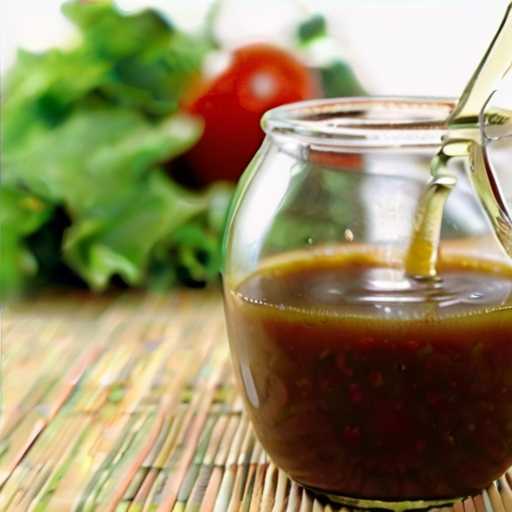
- 1. Balanced sweetness: To add sweetness without affecting blood sugar levels, add ingredients like stevia, erythritol, and monk fruit. Choose natural sweeteners. It has a mellow taste with a good balance of sweetness and sourness.
- 2. Use fresh ingredients: Fresh herbs, garlic, shallots, and citrus peels can give your dressing a lively flavor. Avoid processed foods that may contain hidden sugars and additives.
- 3. Experiment with vinegar: Add depth and flavor to your dressings by experimenting with different types of vinegar, including balsamic vinegar, apple cider vinegar, red wine vinegar, and rice vinegar. Consider the sugar added to some flavored vinegars.
- 4. Incorporate healthy fats: Consider using heart-healthy fats in your dressings, such as extra virgin olive oil, avocado oil, and flaxseed oil. These fats improve mouthfeel and aid in the absorption of fat-soluble vitamins from salad ingredients.
- 5. Season carefully: Never underestimate the power of seasoning. For taste, add a small teaspoon of salt and pepper. However, be careful about your overall sodium intake, especially if you have diabetes or high blood pressure.
- 6. Add Umami: Enhance the flavor of your dressing by adding ingredients like soy sauce, miso, nutritional yeast, and Worcestershire sauce. Umami adds complexity and depth to dressings without adding sugar.
- 7. Consider texture: Experiment with texture by adding ingredients like chopped nuts, seeds, or grated cheese to your dressing. These elements add crunch and richness, enhancing the overall flavor of the salad.
- 8. Let it rest: Let the dressing rest for at least 15 to 30 minutes to allow the flavors to meld before serving. Taste and adjust seasoning as needed before mixing with salad vegetables.
- 9. Adjust to your taste: Don’t be afraid to adjust the recipe to suit your personal tastes. If you prefer a spicier dressing, add more vinegar or lemon juice. If you like it creamier, add Greek yogurt or avocado.
- 10. Portion Control: Homemade dressings may be healthier than store-bought ones, but they still contain calories and fat. Watch portion sizes to avoid overdosing, which can affect blood sugar levels.
Presentation Suggestions: Delicious Diabetics Salad Dressing Recipes
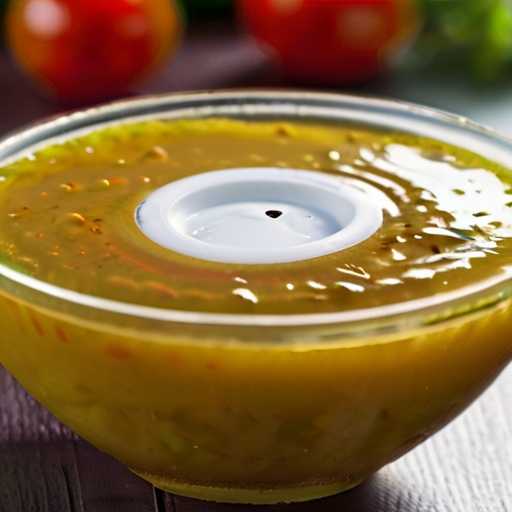
- Presentation and Serving:
- 1. Start by arranging a variety of fresh lettuce leaves in a large bowl. You can also add lettuce, spinach, arugula, or any other vegetable of your choice to the mix.
- 2. Drizzle the diabetic salad dressing liberally over the salad, making sure to lightly coat each leaf for flavor.
- 3. Gently stir the salad to distribute the dressing. Be careful not to damage the delicate greens.
- 4. Place the dressed salad on individual serving plates or bowls to ensure an attractive presentation.
- 5. Optionally, sprinkle with additional toppings such as sliced almonds, crumbled feta, or diced avocado for extra texture and flavor.
- Garnishes and Side Dishes:
- 1. Serve the diabetic salad with a variety of fresh, colorful vegetables, such as cherry tomatoes, cucumber slices, grated carrots, and shredded peppers. These add crunch and freshness to meals.
- 2. To increase protein, add grilled chicken breast slices, boiled eggs, and cubed tofu to your salad.
- 3. If you prefer a heartier meal, serve whole wheat bread or crackers as a side dish.
- 4. Using fresh herbs like basil, parsley, and cilantro as garnishes will improve the appearance of your salad and add extra flavor to it.
- 5. If desired, accompany the salad with a light soup or broth for a complete and satisfying meal.
Storage and leftover recipe: Delicious Diabetics Salad Dressing Recipes
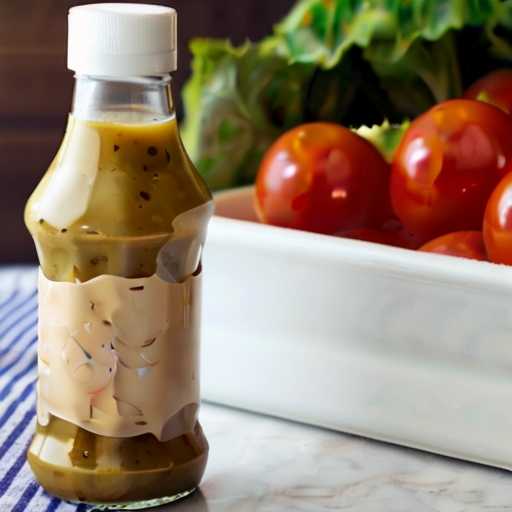
- 1. Refrigerate:
- • Transfer leftover salad dressing to a clean airtight container. Make sure the container is tightly sealed to prevent air from entering, which can cause spoilage.
- • Place container in the refrigerator immediately after use. Refrigeration preserves the freshness and quality of the dressing.
- 2. Shelf Life:
- • Most homemade salad dressings can be stored in the refrigerator for up to a week. However, it’s important to check the specific shelf life for each recipe, as ingredients and cooking methods may vary.
- 3. Separation:
- • It is normal for salad dressings to separate during storage. Before using leftover dressing, shake or stir well to thoroughly combine ingredients.
- 4. Reheat (if applicable):
- • Some salad dressings may benefit from being brought to room temperature before serving. If the dressing has solidified in the refrigerator, let it sit at room temperature for a few minutes, then stir or shake well.
- • Do not reheat salad dressings that contain sensitive ingredients such as fresh herbs or citrus juices, as heat can alter the flavor. However, dressings made with cooked ingredients such as garlic and shallots can be warmed slowly over low heat in the microwave or on the stove. Stir frequently to avoid burning.
- 5. Taste Test:
- • Before serving the reheated dressing, perform a taste test to ensure that the dressing is intact and maintains the desired flavor profile. Add a pinch of salt, pepper, or other favorite seasonings to taste, if desired.
Delicious Diabetics Salad Dressing Recipes ” Nutritional Value Per Serving:
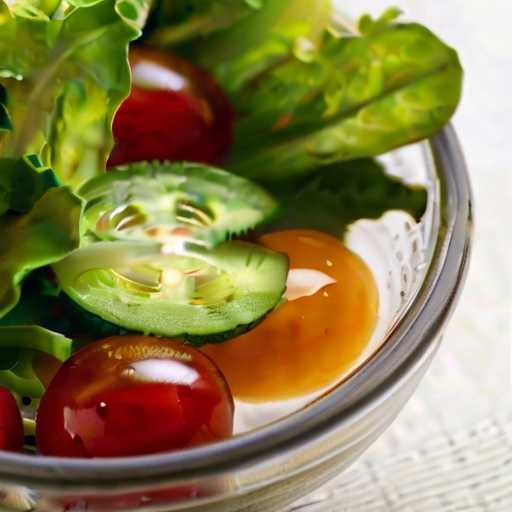
- • Calories: Varies depending on the specific ingredients used in each recipe, but typically ranges from 50 to 150 calories per serving .
- • Fat: Generally low in fat, 1 to 8 grams per serving. The types of fats vary, but most recipes focus on healthy fats like olive oil and avocado.
- • Protein: Again, this varies, but most salad dressings contain a minimum amount of protein, usually about 0 to 2 grams per serving.
- • Carbohydrates: Usually low in carbohydrates, 1 to 8 grams per serving. Carbohydrate content varies depending on the ingredients used as sweeteners, such as honey or maple syrup.
- • Fiber: Some dressings may contain fiber, especially if they contain ingredients such as garlic, onions, or certain herbs. Fiber content ranges from 0 to 2 grams per serving.
- It is important to note that these values may vary depending on the recipe, ingredients used, quantities, and cooking method.
Health Benefits of Delicious Diabetics Salad Dressing Recipes:
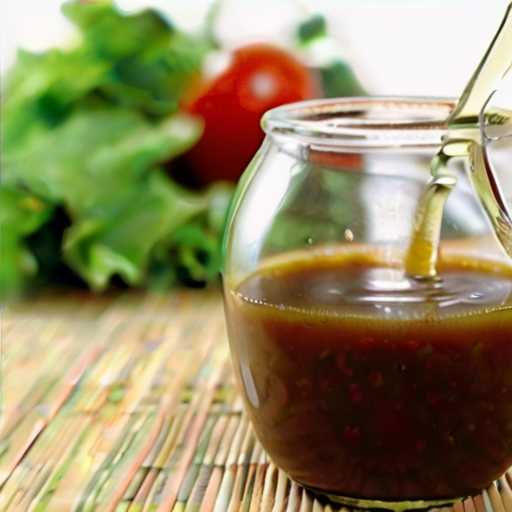
- Glycemic Control: Salad dressing recipes for diabetics often include ingredients with a low glycemic index, such as vinegar, lemon juice, and olive oil. there is. These ingredients help regulate blood sugar levels, making it an ideal choice for diabetics.
- Heart Health: Many salad dressings for diabetics contain heart-healthy fats, such as olive oil and nuts, which can help lower cholesterol and reduce the risk of cardiovascular disease. Helpful.
- Weight Management: Combining high-fiber vegetables and lean protein in salad recipes for diabetics, combined with flavorful, low-calorie dressings, promotes feelings of fullness and satisfaction without excess calories. Your attempts to control your weight may benefit from this.
- Fortified: Salad dressings for diabetics often contain ingredients rich in essential nutrients such as antioxidants, vitamins, and minerals. These nutrients support overall health and well-being, including immune function and skin health.
- Reducing inflammation: Ingredients commonly found in salad dressings for diabetics, such as garlic, ginger, and turmeric, have anti-inflammatory properties and may reduce symptoms of the inflammatory disease that often accompanies diabetes. .
- Digestive Health: Fiber-rich vegetables and probiotic-rich ingredients such as yogurt and kefir, commonly used in salad dressings for diabetics, promote healthy digestion and balance of the gut microbiome. and may reduce the risk of digestive problems such as constipation and bloating.
- Improving insulin sensitivity: Certain ingredients in salad dressings for diabetics: Some supplements, such as apple cider vinegar, can improve insulin sensitivity by making it easier for cells to absorb glucose from the bloodstream, helps treat diabetes.
- Aromatic Alternatives: Using aromatic ingredients such as herbs, spices, and citrus juices in diabetic salad dressings allows you to enjoy delicious meals without relying on high-sugar or high-fat seasonings, making them diabetes-friendly. Your overall enjoyment of the meal will increase.
DIY and Professional Bakery’s Delicious Diabetics Salad Dressing Recipes
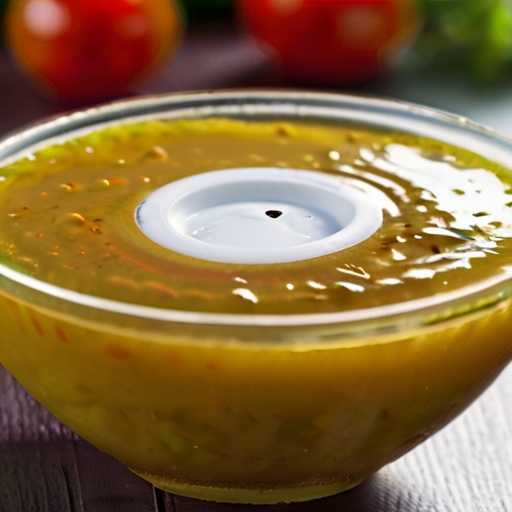
DIY (Do-It-Yourself): Diabetics Salad Dressing Recipes
- Advantages:
- Ingredient Control: DIY involves careful selection of ingredients and compatibility with the diet. You can ensure that restrictions are met, diabetes-friendly recipes are sugar-free, etc.
- Customization: The ability to tailor recipes to suit individual taste preferences and dietary needs for a more personalized experience.
- Cost-effective: DIY is more budget-friendly because you can buy ingredients in bulk and avoid the markups associated with purchasing ready-made dressings.
- Learning Experience: Making salad dressing at home can be an educational journey to learn about flavor combinations, cooking techniques, and the science behind emulsification.
- Disadvantages:
- Time-consuming: DIY dressings require time to prepare, including gathering ingredients, measuring, mixing, and emulsifying, which may not be feasible for people with busy schedules.
- Required skills: Some recipes may require culinary skills or knowledge of specific cooking techniques, which can be difficult for beginners.
- Risk of Failure: Experimenting with homemade dressings may produce undesirable results, which can lead to wasted ingredients and frustration.
- Budget Considerations:
- DIY dressings can be inexpensive, especially if the ingredients are purchased in bulk. However, an initial investment in high-quality oils, vinegars, and other specialty ingredients may seem expensive at first, but it will save you money in the long run.
Professional Bakery: Diabetics Salad Dressing Recipes
- Advantages:
- Convenience: Buying ready-made salad dressings from professional bakeries saves time and effort as they are ready to use.
- Consistency: Professional bakeries often have perfect recipes and techniques that ensure consistent taste and quality from purchase to purchase.
- Variety: Bakeries offer salad dressings in a variety of flavors and styles, and may offer options to suit different tastes and occasions.
- No cooking skills required: Shopping at the bakery no longer requires cooking skills or kitchen equipment, making it accessible to those with limited cooking experience.
- Disadvantages:
- Limitations in Ingredient Control: Premade dressings may contain additives, preservatives, or hidden sugars that do not suit dietary restrictions or personal preferences.
- Cost: Purchasing ready-made dressings can be more expensive than making them at home because of labor, overhead, and markup costs.
- Availability: Depending on your location, access to specialty bakeries offering diabetic-friendly dressings may be limited.
- Budget Considerations:
- Purchasing dressings from a professional bakery is convenient, but can be more expensive than making them at home. It is important to consider the cost per serving and the convenience and time savings compared to a DIY approach.
Budget-Friendly Options: Diabetics Salad Dressing Recipes

- Affordable Decorating Ideas:
- Use fresh herbs as garnishes or as an ingredient in salad dressings. Add color, flavor, and freshness to your presentation without breaking the bank.
- Repurpose old seasoning and sauce jars and bottles as containers for homemade salad dressings. Just give it a deep clean and add some dressing for an attractive, eco-friendly touch.
- Decorate your serving area with simple, inexpensive items like colorful cloth napkins, fresh produce, and small pots of herbs. These elements can improve the visual appeal of your salad station without requiring a large investment.
- Creative Solutions:
- To add flavor to your diabetic salad dressing, try different types of vinegar, including apple cider vinegar, balsamic vinegar, and rice vinegar. These options are usually inexpensive and easily available at most grocery stores.
- Add citrus juice, such as lemon, lime, or orange, to dressings to add a spicy flavor without adding sugar. Citrus fruits are often affordable and can add some pizzazz to your recipes.
- Use natural sweeteners, such as honey or agave syrup, sparingly to balance the acidity of the dressing. These alternatives add sweetness without raising blood sugar too much, making them suitable for diabetic-friendly recipes.
Variations to try delicious Diabetics Salad Dressing Recipes:
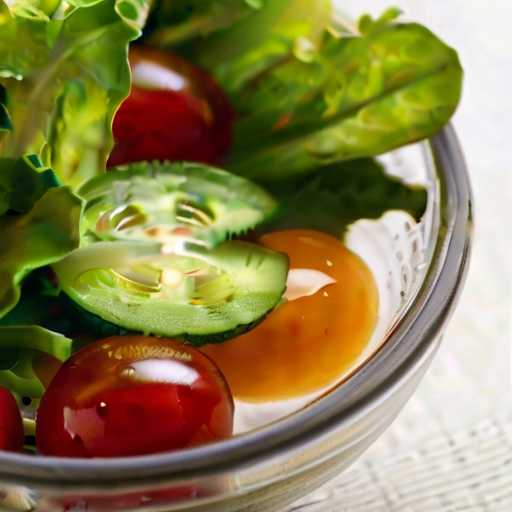
- Balsamic Dijon Vinaigrette:
- Ingredients: Balsamic vinegar, Dijon mustard, olive oil, garlic (optional), salt, pepper.
- Directions: Mix 2 tablespoons of balsamic vinegar, 1 tablespoon of Dijon mustard, 3 tablespoons of olive oil, minced garlic (optional), and a pinch of salt and pepper.
- Greek Yogurt Ranch Dressing:
- Ingredients: Natural Greek Yogurt, Lemon Juice, Garlic Powder, Onion Powder, Dried Dill, Salt, Pepper.
- Directions: Combine 1/2 cup Greek yogurt, 1 tablespoon lemon juice, 1/2 teaspoon garlic powder, 1/2 teaspoon onion powder, 1 teaspoon dried dill, and a pinch of salt and pepper. Mix until smooth.
- Lemon Herb Dressing:
- Ingredients: fresh lemon juice, olive oil, honey (or sugar substitute), fresh herbs (parsley, basil, thyme, etc.), salt, pepper.
- Directions: Combine 1/4 cup fresh lemon juice, 1/4 cup olive oil, 1 teaspoon honey (or sugar substitute), finely chopped herbs (optional), and a pinch of salt and pepper.
- Asian Ginger Sesame Dressing:
- Ingredients: Soy sauce (low sodium), rice vinegar, sesame oil, fresh ginger (grated), garlic (minced), honey (or sugar substitute), black sesame seeds (optional).
- How to make: Mix 2 tablespoons of soy sauce, 2 tablespoons of rice vinegar, 1 tablespoon of sesame oil, 1 teaspoon of grated ginger, 1 minced garlic clove, 1 teaspoon of honey (or sugar substitute), and a pinch of black sesame powder.
- Avocado Lime Dressing:
- Ingredients: Ripe avocado, lime juice, cilantro (optional), natural Greek yogurt, garlic powder, salt, pepper.
- Instructions: Mix 1 ripe avocado, 2 tablespoons lime juice, a pinch of cilantro (optional), 1/4 cup plain Greek yogurt, 1/2 teaspoon garlic powder, and a pinch of salt and pepper until creamy.
- Spicy Chipotle Dressing:
- Ingredients: Chipotle peppers in adobo sauce, lime juice, olive oil, honey (or sugar substitute), cumin, garlic powder, salt, pepper.
- Directions: Puree 1-2 chipotle peppers with adobo sauce (adjust to taste), 2 tablespoons lime juice, 3 tablespoons olive oil, 1 teaspoon honey (or sugar substitute), 1/2 teaspoon cumin, garlic. 1/4 teaspoon powder and a pinch of salt and pepper.
Why this Delicious Diabetics Salad Dressing Recipes Stands out
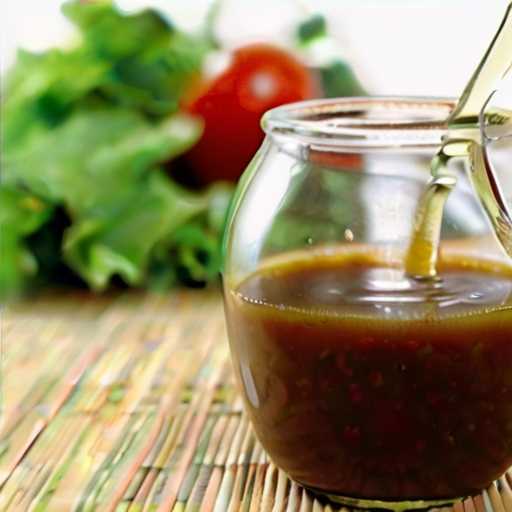
- Ingredients with a low glycemic index:
- The basis of this recipe is the use of ingredients with a low glycemic index (GI). Instead of refined sugar, which can spike blood sugar levels, this dressing contains natural sweeteners like stevia and erythritol to ensure a balanced blood sugar response.
- Healthy Fats:
- Unlike many commercial salad dressings that are high in unhealthy fats, this recipe focuses on containing healthy fats. Ingredients like olive oil, avocado oil, and flaxseed oil provide essential fatty acids without sacrificing taste.
- Balanced Flavor Profile:
- By combining various herbs, spices, and acidic elements such as vinegar and citrus juice, this dressing achieves a balanced flavor profile. The combination of sweet, sour, salty, and savory enhances the flavor of your salad without resorting to excessive amounts of salt or sugar.
- Customizable to your tastes:
- This recipe is flexible, allowing individuals to adjust the ingredients based on taste preferences and dietary needs. Whether you like spicy or sweeter dressings, you can easily adjust the ingredient proportions to suit your taste.
- Easy to Prepare:
- Thanks to simple step-by-step instructions, this dressing is easy to prepare and can be used by even those with limited cooking skills. The simplicity of the recipe encourages people to choose homemade dressings over store-bought ones, promoting healthier eating habits.
- Nutritious Ingredients:
- Each ingredient in this dressing provides essential nutrients such as vitamins, minerals, and antioxidants to support overall health and well-being. Ingredients like garlic, herbs, and vinegar not only add flavor, but also offer potential health benefits, such as improving digestion and supporting the immune system.
- Versatile:
- Besides salads, this dressing can also be used as a marinade for proteins or drizzled over roasted vegetables to enhance the flavor of a variety of dishes. Its versatility elevates recipes and makes it a staple in the kitchen for those looking to eat healthier.
Delicious Salad Dressing Recipe for Diabetics

Vegan Balsamic Vinaigrette: Diabetics Salad Dressing
- Ingredients:
- 1/4 cup balsamic vinegar
- 2 tablespoons Dijon Senf
- 1 tablespoon juice from cubes Native Olive Oil Extra Oil
- Salt and pepper to taste
- Directions:
- Small bowl Stir in the balsamic vinegar, Dijon mustard, minced garlic, and maple syrup/agave nectar.
- Slowly pour in the olive oil, stirring constantly, until the dressing is emulsified.
- Season with salt and pepper.
- For up to a week, keep in the refrigerator in an airtight container.
Gluten-Free Lemon Tahini Dressing: Diabetics Salad Dressing
- Ingredients:
- 1/4 cup tahini
- Zest and juice of 1 lemon
- 2 tablespoons water
- 1 clove minced garlic
- 1 tablespoon extra virgin olive oil
- Salt and pepper to taste
- Directions:
- In a small bowl, combine tahini, lemon zest, lemon juice, water, and minced garlic until smooth.
- Slowly pour in the olive oil, stirring constantly, until everything is well mixed.
- Season with salt and pepper.
- If the dressing is too thick, add water 1 tablespoon at a time until the desired consistency is reached.
- For up to a week, keep in the refrigerator in an airtight container.
Vegan Avocado Cilantro Dressing: Diabetics Salad Dressing
- Ingredients:
- 1 ripe avocado, peeled and pitted
- 1/4 cup fresh coriander leaves
- 1/4 cup unsweetened almond milk
- Juice of 1 lime
- 1 garlic clove, minced
- Salt and pepper
- Directions:
- In a blender or food processor, combine the avocado, coriander leaves, almond milk, lime juice, and minced garlic.
- Blend until smooth and creamy, adding more almond milk as needed to achieve desired consistency.
- Season with salt and pepper.
- Transfer to an airtight container and refrigerate for at least 30 minutes before serving to allow the flavors to meld.
- Stir well before use and store leftovers in the refrigerator for up to 3 days.
Recipe Notes: Delicious Diabetics Salad Dressing Recipes
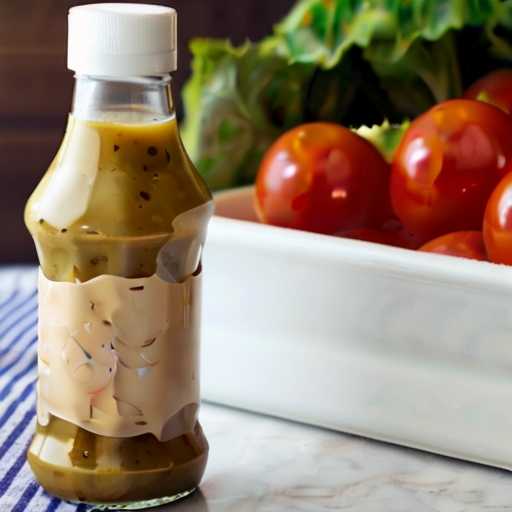
- Ingredient Selection: Choose fresh, whole ingredients whenever possible. Using fresh herbs, citrus juice, and vinegar can add bright flavor without adding excessive amounts of sugar. Avoid packaged dressings as they often contain hidden sugars and unhealthy fats.
- Flavor Balance: Combining spicy, sweet, salty, and savory elements to achieve flavor balance. To add acidity without adding sugar, try different vinegars (such as balsamic vinegar, apple cider vinegar, or red wine vinegar).
- Sweeteners: If sweetness is desired, use natural alternative sweeteners such as stevia, erythritol, and monk fruit sweeteners in moderation. These options will help you satisfy your cravings without spiking your blood sugar levels.
- Healthy fats: Include healthy fat sources such as extra virgin olive oil, avocado oil, and nuts/seeds. These fats not only provide richness and depth of flavor, but also support nutrient absorption and help stabilize blood sugar levels.
- Portion Control: Homemade dressings are healthier than store-bought dressings, but portion control is still important. Follow recommended portion sizes to avoid excess calories and carbohydrate intake.
- Customization: Don’t be afraid to customize your dressing to suit your personal tastes and dietary needs. Adjust ingredients to suit your taste preferences and experiment with different flavor combinations to create exciting and fun salads.
- Storage: Most homemade dressings can be stored in the refrigerator for up to a week. Shake or stir well before use, as ingredients may separate over time.
- Cultural Significance: In different cultures, salads and dressings have unique meanings. Explore cuisines from around the world and discover new flavor profiles and ingredients to inspire your own diabetic-friendly dressings.
- Personal Anecdote: Share your journey to discovering and creating delicious, diabetic-friendly salad dressings. Whether it’s finding the perfect balance of flavors or overcoming the challenge of controlling blood sugar levels, your experience can inspire the culinary endeavors of others.
FAQ: Delicious Diabetics Salad Dressing Recipes
- Can salad dressings be used as part of a diabetic-friendly diet?
- Yes, salad dressings can certainly be part of a diabetes-friendly diet. By choosing the right ingredients and being careful with portion sizes, you can enjoy a flavorful dressing without significantly raising your blood sugar levels.
- What are the key ingredients to look out for in diabetic-friendly salad dressings?
- Look for ingredients like olive oil, vinegar (such as balsamic vinegar or apple cider vinegar), lemon juice, herbs, and spices. These ingredients add flavor without significantly increasing carbohydrate or sugar content. Avert dressings that include high fructose corn syrup or additional sugar.
- Are there any special salad dressing recipes you recommend for diabetics?
- Yes, there are many delicious salad dressing recipes that are also suitable for diabetics. Options like a simple vinaigrette with olive oil, vinegar, Dijon mustard, and herbs or a creamy avocado dressing made with avocado, Greek yogurt, lime juice, and garlic are great choices.
- How do I control portion size when using salad dressing?
- Portion control is important when using salad dressings, especially for diabetics. Consider using a measuring spoon or small ladle to measure the amount of dressing. You should consume approximately 1 to 2 tablespoons of dressing per serving, depending on your individual dietary needs.
- Are there commercially available salad dressings suitable for people with diabetes?
- Many commercially available salad dressings can contain high levels of sugar and unhealthy fats, but there are several diabetic-friendly options as well. There are. Look for dressings labeled “no sugar,” “low carb,” or “light” that contain healthy fats like olive oil and minimal added sugar. Always check the nutrition label and ingredient list to ensure it meets your nutritional needs.
In summary, these delicious salad dressing recipes for diabetics provide flavorful options that can accommodate dietary restrictions without compromising taste. With a focus on low-glycemic index ingredients and balanced flavors, these dressings offer a wide variety to enhance your salads. From tangy vinaigrettes to creamy avocado dressings, every recipe focuses on health while ensuring satisfaction. By incorporating fresh herbs, citrus fruits, and healthy fats, these dressings not only meet the needs of diabetics, but also enhance the cooking experience for everyone. Enjoy a nutritious and delicious dressing without the guilt.






